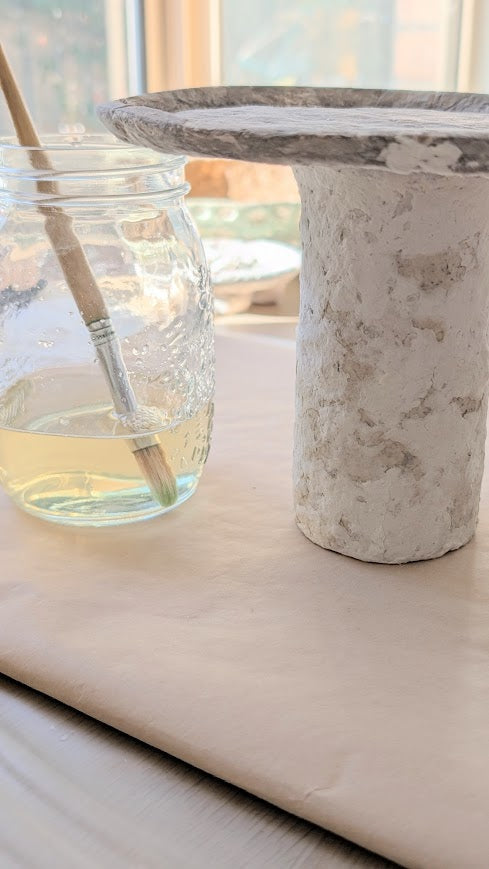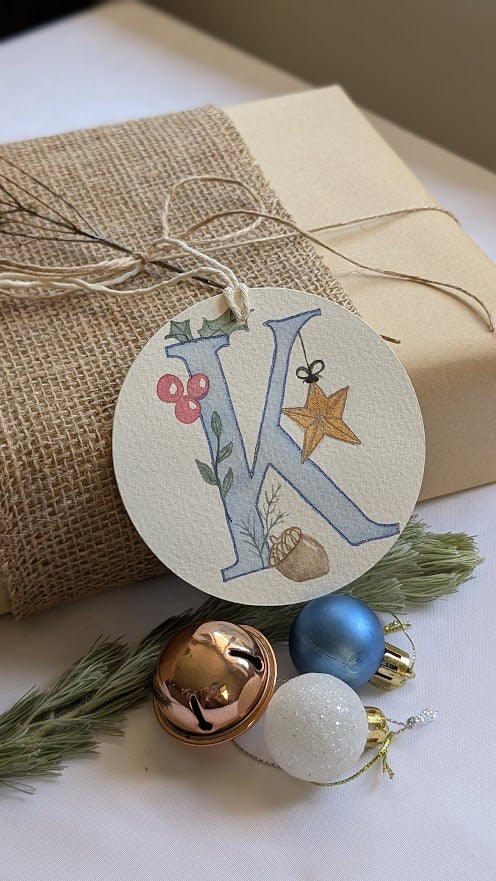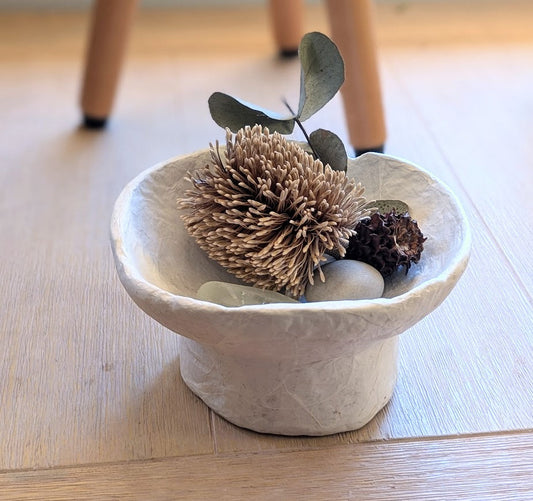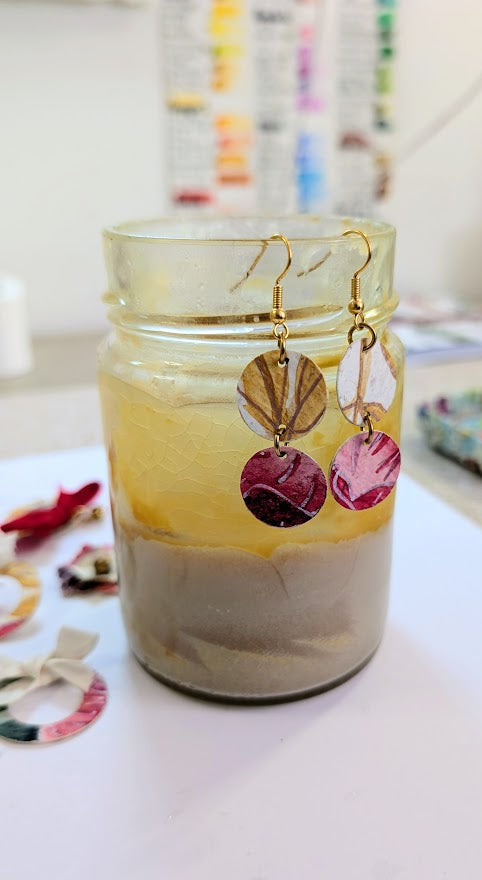
An Ancient Secret for Modern Makers: Natural Glue
From my days working in Early Childhood Education, I’ve known a thing or two about glue—PVA, Clag, glue sticks, and of course, the trusty flour-and-water paste we used for papier-mâché. So when I started Paper & Palette Studio, I naturally reached for what I thought would be an easy option: spray adhesive.
And sure, it was easy—quick-drying, minimal mess—but it didn’t take long to realise it wasn’t sticking (literally or ethically). The bond was weak, and more importantly, it came with some serious environmental baggage.
Why I Gave Up Spray Adhesive
Here’s what made me pause:
🌫️ 1. VOCs (Volatile Organic Compounds)
These are chemicals that evaporate into the air as the glue dries. They contribute to air pollution and can mess with your indoor air quality, causing headaches or respiratory irritation—especially in a closed workspace.
🛢️ 2. Petroleum-Based Ingredients
Most spray adhesives are made from synthetic resins derived from fossil fuels. That means a bigger carbon footprint—and not in line with the kind of studio I want to run.
🧴 3. Wasteful Packaging
Aerosol cans might look recyclable, but they often aren’t accepted in kerbside recycling due to leftover chemicals and propellants. Most end up in landfill.
🔥 4. Flammable and Fussy
The spray itself is flammable, which isn’t ideal when you’re working with natural materials or near a heat source (like I often am). Not exactly the calm, mindful studio vibe I’m going for.
The Search for a Better Bond
After tossing the spray, I switched to Mod Podge Hard Coat. While it worked better and avoided aerosols, it was still plastic-based—and that didn’t sit right with me.
That’s when I had a flashback to my childcare days: making glue from flour and water. I started to wonder… could there be a more sustainable, low-tox alternative out there?
After a bit of research and some trial and error, I found two glue recipes that I now use regularly in my studio. They’re simple, natural, and align beautifully with my slow, sustainable making process.
🌿 Eco Glue Alternative 1: Gelatine Glue
This is a traditional adhesive made from animal collagen (usually from skin or bones) mixed with water—and sometimes a splash of vinegar or glycerine to help it keep and stay flexible. It sets as it cools, holds firmly, and is fully biodegradable.
What I love most? It’s reversible. Just apply heat or moisture, and you can soften it again. That makes it perfect for things like paper, fabric, and delicate assemblies where I might need to reposition or repair.
A Bit of History
Gelatine glue isn’t new—it’s ancient:
- Ancient Egyptians used it for furniture and gold leaf.
- Medieval bookbinders relied on it to create illuminated manuscripts.
- Renaissance artists used it in woodwork, gilding, and canvas prep.
- Even today, violin makers and furniture restorers still favour it.
Talk about a glue with staying power.
🌽 Eco Glue Alternative 2: Cornflour Glue
Cornflour glue (also called corn-starch paste) is a plant-based option that’s gentle, safe, and made entirely from pantry staples. It’s ideal for paper crafts, kids’ projects, and lightweight items. It dries clear, and while it’s not as strong as gelatine glue, it’s perfect for low-impact tasks.
The Recipes
✨ Gelatine Glue
Ingredients:
- 2 tbsp unflavoured gelatine powder
- 6 tbsp cold water
- 2 tsp white vinegar
- 1 tsp glycerine (optional – helps keep it flexible)
Method:
- Bloom the gelatine in cold water for 5–10 mins.
- Gently heat over a double boiler until smooth and dissolved.
- Stir in vinegar and glycerine.
- Cool slightly before using.
- Store in a jar in the fridge for 1–2 weeks. Reheat gently to reuse.
✨ Cornflour Glue
Ingredients:
- 1 tbsp cornflour (corn-starch)
- 1 cup water
- 1 tsp white vinegar
- 1 tsp salt (optional – to prevent mould)
Method:
- Mix cornflour with a splash of water to make a slurry.
- Boil the rest of the water, then slowly whisk in the slurry.
- Stir continuously as it thickens into a smooth paste.
- Add vinegar and salt. Let cool.
- Store in the fridge for up to a week.
These glues are now a staple in my studio—simple, sustainable, and effective. They take a little extra effort compared to store-bought options, but for me, that’s part of the charm. Slowing down, making things from scratch, and knowing exactly what’s in the materials I use? That’s what Paper & Palette is all about.


